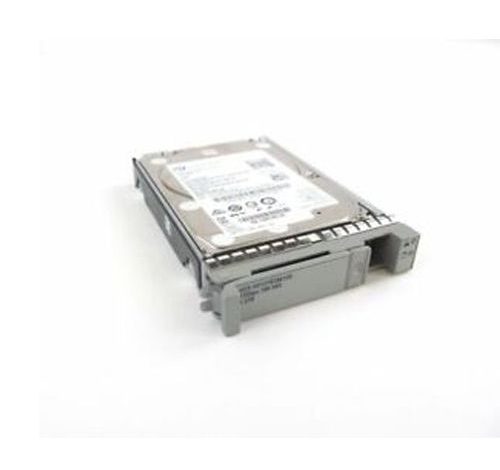How Hard Disk Drives and Storage Capacity Runs

What started as a 6-foot tall circle stockpiling gadget with 50 platters has advanced into a Hard Disk Drive with a 2.5 inch platter. Check online Cisco SAS Hard Disk at affordable price in UAE.
Hard Disk Drives (HDD) are equipment gadgets that store and recover information on a PC. They are the focal knowledge on your work area or PC, gadgets, and numerous other hardware.
How does a HDD Work?
A hard drive contains a head actuator, read/compose actuator arm, read/compose head, shaft, and platter. It has a few plates stacked on top of one another that hold your gadget’s information. Each plate has charged metal grains separated into bits that can move in one of two headings. These pieces are represented by a double arrangement of 0s and 1s. Information is composed when the series of pieces are changed over to electrical flows. These flows are taken care of through an electromagnet, which redirects the pieces. They can then be changed into helpful information on the gadget.
At the point when the Cisco SAS Hard Disk starts understanding data, the actuator conveys a message to the read/compose arm to move the read/compose head around the platter to track down the record area. Makers are continually attempting to build the plate space to consider higher capacity limits.
Capacity Capacities Broken Down
Each hard drive has various information stockpiling limits, which are separated into bytes. 8 pieces, which are the paired units on the platter, are equivalent to one byte. A byte is the littlest measure of information while the Terabyte offers the most elevated stockpiling limit.
- A Kilobyte (KB) is equivalent to 1,024 Bytes
- A Megabyte (MB) is equivalent to 1,024 Kilobytes
- A Gigabyte (GB) is equivalent to 1,024 Megabytes
- A Terabyte (TB) is equivalent to 1,024 Gigabytes
- Advancement of HDD Size and Storage.
History of Hard disk drives
The 1970s offered a hard plate drive in a lot more modest shells with the capacity to store approximately 60 MB.
The way in to Cisco SAS Hard Disk was the low-mass read/compose heads as well as the 8-inch hard plate drives, making the entire unit significantly more compact.
The 1980s started with the Fujitsu brand HDD with a 10.5-inch drive which held a record 446 MB of information.
Later in this ten years, IBM was near the precarious edge of Gigabyte stockpiling with the initial 1 Gigabyte hard drive. However it offered more capacity, it was the size of a motor, when contrasted with the Fujitsu model which was considerably more reduced.
The 90s demonstrated a triumph for Iomega, who sent off the initial 1 GB cartridge drive. By 1997, Seagate was advancing toward the future with a 9 GB limit drive.
They based upon their achievement during the 2000s with a 18 GB limit drive that moved information at maximum velocities: 61 MB each second. By 2010, Seagate offered a 4TB drive with a smooth plan and rapid information move pace of 1GB each second.
The most recent in innovation for 2019 is currently the 16TB hard drive, which utilizations Microwave Assisted Magnetic Recording (MAMR) to keep in touch with the plate. The MAMR is a creative way to deal with composing information onto a circle.
It utilizes a twist force oscillator on the compose head to make an electromagnetic field. This non-warming interaction contrasts from the past Heat Assisted Magnetic Recording (HAMR) which utilizations hotness to all the more proficiently keep in touch with the media however requires additional materials to guarantee the hotness doesn’t cause information misfortune. The MAMR requires no surface opposition of the attractive material and doesn’t utilize warm changes.
Reinforcement Options
There are a few alternate approaches to reinforcement your data including CDs and DVDs, making a clone of your hard drive, an outer hard drive, remote drive, or the more well known choice of online stockpiling like the Cloud.
Each has their own upsides and downsides, as CDs and DVDs are compact, however have little extra space. Making a clone might be useful assuming you persistently clone your data consistently.
A remote drive offers accommodation, however may run sluggish relying upon how much put away information. While online capacity frameworks are continually accessible, it tends to be costly to back up your information on the off chance that you have an enormous limit of records.
Secure Data Recovery Knows Storage
Regardless sort of drive or reinforcement arrangement you use, no gadget is insusceptible to information misfortune.
Our architects in the recuperation lab have many years of involvement managing a wide range of hard drives and reinforcement gadgets.
Our innovative work group is continually tracking down new techniques to recuperate information from a wide range of drives.
They work out of a Cisco SAS Hard Disk, which just permits 10 impurities for each cubic foot of room.
With the size of hard drives contracting and how much capacity expanding, utilizing these principles is the most ideal way for our group to securely and safely recuperate your information.




